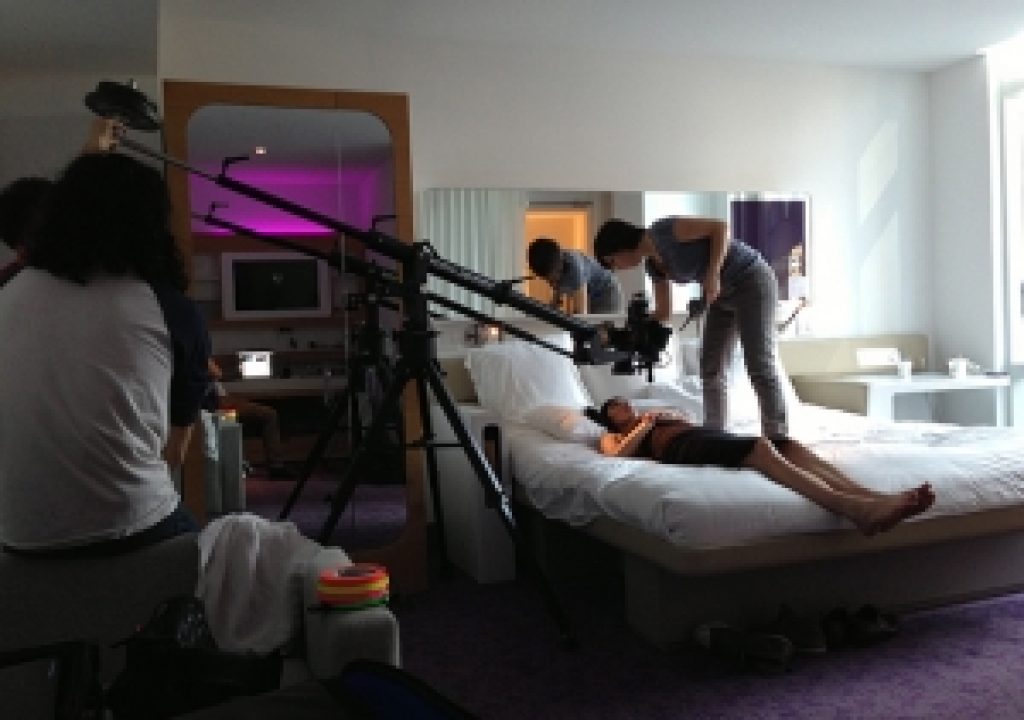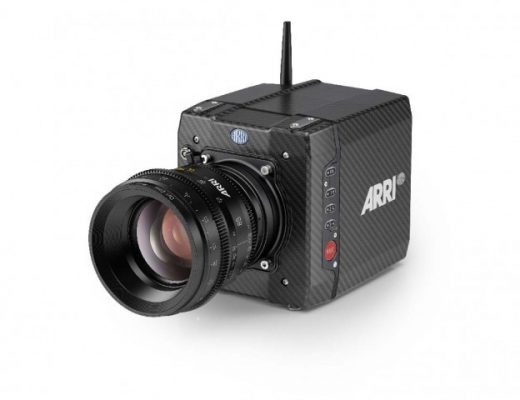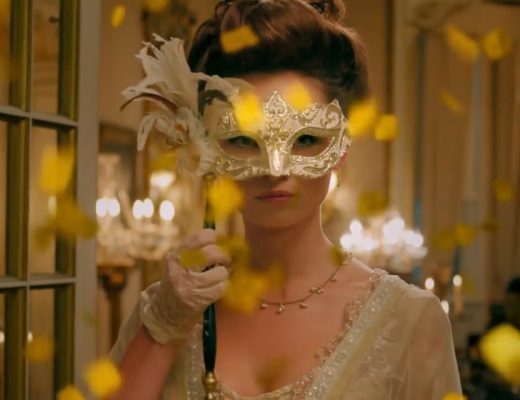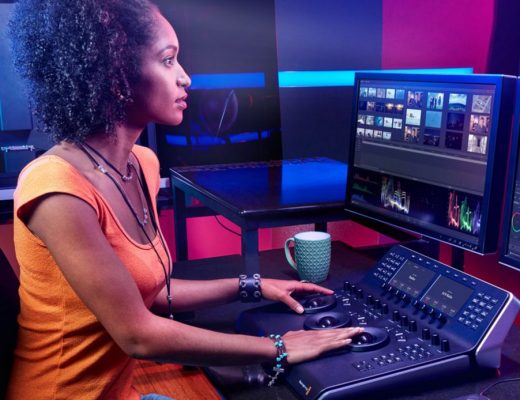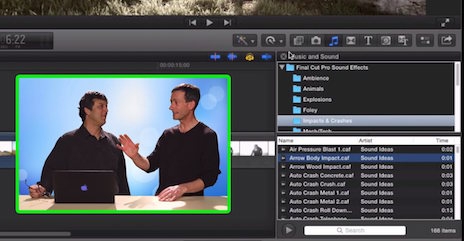“The Only Choice” was written and directed by Christopher Califano. A short film that was shot in three days, it tells the story of a woman who seems to have only one choice left with her boyfriend, and details how she comes to that decision.
Califano shot with the Blackmagic Cinema Camera and the Blackmagic Production Camera, and we wanted to talk to him about his experiences with the products to give some real insights into the ways they can be utilized. We also discuss issues he dealt with in production and post-production, and his experiences shed some light on how filmmakers can and should approach these issues in their own productions.
The Only Choice from Christopher Califano on Vimeo.
Why did you choose the BMCC & BMPCC for your production?
Always being a huge fan of the Arri Alexa, naturally I wanted to shoot everything I could possibly think of on this camera. But let’s face it! I am an amateur filmmaker with a budget. Unfortunately, I do not have sixty thousand dollars to buy this camera. Renting the Alexa is also expensive at over two thousand dollars a week. Don’t even get me started on insurance! So I thought about what would give me the dynamic range and cinematic polish for a fraction of the price. I have to admit there aren't too many options out there at the time. This was right before raw for Canon 5D was released. Then the Blackmagic cameras started finally shipping. I was still a bit skeptical, but after seeing lots of the footage online, I noticed that in the right hands this camera could compete with the big boy cinema cameras. Baby Alexa was thrown around but it was more like newborn Alexa. For the price point and the 2.5k raw this was a steal. All that dynamic range to play around with was unheard of for 2,995.That was almost the cost of renting the Alexa for a week and half. Mind you, this was even before they dropped it to 1,995.
And then there were logistical benefits such as not having to constantly wonder if you were over or under exposing a scene perfectly. Most of all the range could be recovered for the most part. This made working with a three man crew much easier, since that crew consisted of me, the cinematographer and the focus puller. The poor cinematographer could finally concentrate on the shots and not break his back setting up lights. After production wrapped we needed some pickup shots. One problem…we needed to keep filming under wraps in the building we were using. So how would we film the pickup scenes with the same image quality in a smaller form factor and keep it to smaller production without disturbing any residents? I was lucky enough to skip a few people in the preorder line and receive my pocket camera ahead of schedule. So without even testing out the camera because of scheduling conflicts we went right to shooting some of the pickup scenes. Granted, we couldn’t shoot 2.5K but I was amazed at how well the prores footage was able to match up with the raw footage.
I feel this would not been possible if we used two different DSLR cameras. The two cameras changed my entire workflow and the way I will handle all of my productions. I’m really excited about Blackmagic Design and their entire camera line. They're only going to make a filmmaker's life easier.
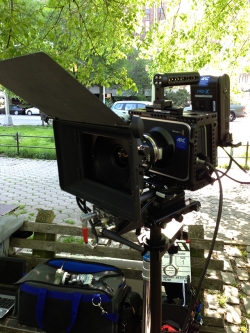 Every project is different, but the filmmaking process is one that can be approached in a deliberate manner or more on-the-fly. What was your process like? Anything you’d have done differently?
Every project is different, but the filmmaking process is one that can be approached in a deliberate manner or more on-the-fly. What was your process like? Anything you’d have done differently?
I would actually say that I approached this being very unprepared. Funny enough, I think most amateur filmmakers encounter this problem when using a new camera for the first time. I really didn't get any prep time with the camera. So I did as much research as I could. I made sure to read the online manual frontwards and back. Still, there's nothing like using the camera to really learn the ins and outs of how it works. I felt like a student and the camera was my teacher. This was really a learning process for me and for everyone on set. My DP had never used the camera before. No one on set had worked with one before. And none the actors had been shot with the camera before. So I really had no other choice but shooting this project on-the-fly. But it was a great learning experience and I really wouldn't trade it for the world.
Tell us about some of the challenges you encountered during filming. How were they resolved?
The first and most challenging issue I encountered was the SSD drive overheating problem. The cinematographer and I would shoot a portion of the scene but right after the scene was done the SSD drive signal would go off on the camera. I wanted to flip out, especially if we captured a really great performance. The good thing was that the scenes were recovered even though the SSD drive would not read them on the camera. The shots were still recoverable off the drive. I guess this is just an overheating issue. So when you're shooting an important scene take caution and make sure right after you back up your SSD drive to your computer, or have a DIT on set.
The other issue we encountered, and it's probably one everyone has dealt with by now, was the glare from the screen. This wasn't an issue inside, but once you’re outside, it’s entirely a different ball game! And quite frankly it's a pain in the butt. The focus puller and I could not see the screen and I have no idea how my cinematographer was able to manage. I guess he has hawk eyes. The worst was when we had it on the steadycam and the SDI cable was not cooperating with our steady-cam monitor. So we had to rely on the cameras monitor. That was a nightmare! On the bright side, we also used the camera cage from wooden camera. It was a great little rig and I highly recommend it to anyone who either buys this camera or rents from their local rental house.
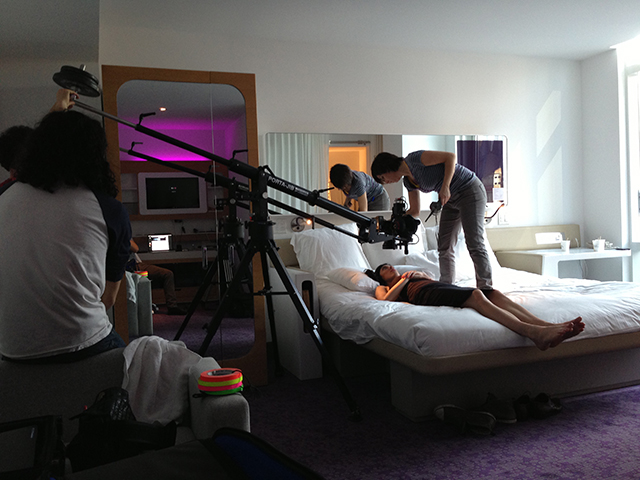 How was audio handled?
How was audio handled?
Since there was no dialogue we relied heavily on the sound effects. Our foley artist and sound editor went back to the locations and made sure to recreate all the sounds for the film. 98 percent of the films sounds were recreated using this process. Scratch tracks were still recorded on the camera. If we were capturing dialogue for the film I would have to say the BMCC isn’t the best to run your shotgun mic through. Using a juicedlink preamp or possibly a zoom h4n is going to be more logical way to capture the best audio.
What advantages and disadvantages did you see and experience with the BMCC & BMPCC?
The advantages of using the BMCC were really apparent. We got 2.5k raw and all that dynamic range allowed me to play around with the look and feel of the film in post, making my life much easier. Moiré was also an issue in certain scenes. Certain buildings and actors' clothing just didn’t read well on the sensor and caused some slight moiré. Using the BMPCC size was a huge advantage! The form factor and size allowed us to get fast, tight shots without having to lug the cinema camera up long flights of stairs or city blocks.
The only disadvantages that jump out for me were around finding the appropriate SD to work with the camera. Most cards gave dropped frames and no SD messages. We found the best cards to use were Lexar Professional, 64 GB 600x and SanDisk Extreme Pro 64 GB. Still, the advantages outweighed the disadvantages when you have such amazing picture quality and range with such cost effective cameras.
What was the biggest challenge you encountered and how was it resolved?
There were two big challenges I faced while shooting. The first challenge was I had to rely on the cameras screen. 5 inches is not so tiny nor is it too big. But when you huddled around that with your crew it makes everything much tougher. Watching performances on a small screen with three other people really took a great deal of concentration. We were supposed to rent an extra smallhd monitor but the rental house was out. Due to our budget and time constraints we couldn’t secure one in time which left us stuck with what we had. There was no waiting for one or asking around we had the weekend to shoot the entire film. Three days to nail every scene without an extra monitor, which really meant improvisation was key. We set up a system, anyone who didn’t need to view the screen stepped away from the camera. My focus puller who was using a Chrosziel DigiFOX Wireless Follow focus would block the scene various times until she felt comfortable using her marks without the viewing the screen. During filming I would shadow my DP and know the camera marks without having to bump or get in his way during an important take. This system worked best during the three day shoot.
Weather was also a huge factor. It rained 2 days out of the 3 day shoot which meant every exterior shot was filmed in one day. We made sure to film all the interior shots first. Another headache was waiting for some natural light to enter the room that we were shooting in. If it's raining all day this means it's going to be cloudy all day so we really had to wait for some good times for when the light hit the window or when we had really good sunlight fill the room. This was something that we tweaked with in post. I'm just glad we had the raw 2.5k power to bend the color temperature match with other scenes shot on a different day.
Lastl,y we really had to be careful around how much SSD memory we had. We were working with two Samsung 840 Pro SSD drives, and each were 256 GB. That gave us roughly gave us 34 minutes each. So we really had to make sure that every shot counted. When you’re working with raw dng files it makes it harder to transfer footage without having some sort of DIT setup. We were lucky enough to have a few of our MacPros on hand so we could transfer all the raw footage to secure hard drives without worrying about having a DIT on set.
Tell us about your post production workflow. Did you jump right into post or was it handled as you shot? What worked and what didn't work for you in post?
Post production was put on hold for 2 months, because of a series of misfortune events. I was originally going to hand it off to a color grade technician. Those plans fell through so I had to learn DaVinci Resolve quickly and efficiently. I had played around with Resolve Lite before we shot the film so I was somewhat prepared for it. I practiced with some free downloadable DNG files. I was halfway there, but not fully ready to grade my first film using this program. I was lucky enough to run into some great tutorials offered by Denver Riddle over at Color Grade Central. Not only through his great tutorials was I able to understand nodal grading, but I was also able to learn the ins and outs of DaVanci Resolve. I wasn’t going to release the film unless I could produce a color and look worthy of perfection, at least in my eyes. As much as I hate to say it, not having a colorist allowed me to really achieve the look of the film I was going for. Also, it forced me to learn DaVinci Resolve. The workflow was relatively smooth, thankfully. I was surprised at how sharp the images were, though the Zeiss Cp2 set we used were partially to thank for this.
What didn’t work was trying to export the graded film in Resolve as 16 Bit TIFF files. I was using Premiere CS6 to edit the film but it unfortunately does not support editing in 16 Bit yet. Luckily, I found a great substitute which was DPX. I felt this would allow me to keep most of the data and quality. Also DPX would play nicely with Premiere and my dinosaur of a computer. Usually DPX files are more common for VFX work but why not use it, just because of its great benefits.
If the BMCC & BMPCC weren't available what cameras would you have used?
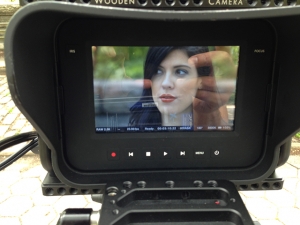 Frankly, I don’t know? I’ve asked myself this question many times. Our budget wasn’t the biggest, and so we didn't have much leeway in that department. We might have gone the route of renting the Sony F5. The quality is excellent. The low light capabilities of this camera are amazing. We had a few scenes that were dimly lit and I think that camera would have really helped us. Still, no regrets around the BMCC. I plan to use these two cameras for my next project.
Frankly, I don’t know? I’ve asked myself this question many times. Our budget wasn’t the biggest, and so we didn't have much leeway in that department. We might have gone the route of renting the Sony F5. The quality is excellent. The low light capabilities of this camera are amazing. We had a few scenes that were dimly lit and I think that camera would have really helped us. Still, no regrets around the BMCC. I plan to use these two cameras for my next project.
Any advice you’d offer to other filmmakers looking to use the BMCC & BMPCC?
This camera isn't for anyone who wants amazing picture right out-of-the-box. Expect, and do I mean expect, to tweak with the final picture in post. But what you get in return for all that work is something quite amazing.
What's even more amazing is the price point of this camera. As long as you research the best accessories for this camera, you will be rewarded handsomely with the final product. You really won't be able to find a camera that gives you raw files and comes in such a small form factor for that price. Your other optons are to go out there and spend over $10,000 on Canon C300 or 15,000 on a Red Scarlet package. Do your research, play around with some downloadable DNG files in DaVinci Resolve Lite. Then make your choice. I can tell you it’s well worth it when you see how much creative freedom this camera can give you.
Editor's Note: The original title of this article was Blackmagic Cinema Camera and Production Cameras were “The Only Choice“, but we've changed it to the more accurate Blackmagic Cinema Camera and Pocket Cameras were “The Only Choice”. Thanks to Eduardo G. for pointing out the need for clarification.

Filmtools
Filmmakers go-to destination for pre-production, production & post production equipment!
Shop Now